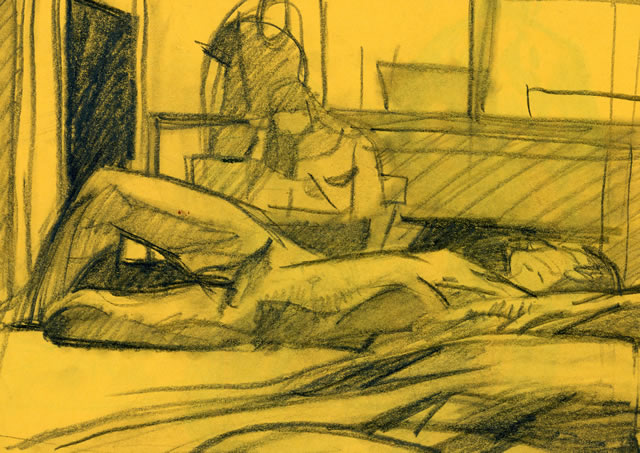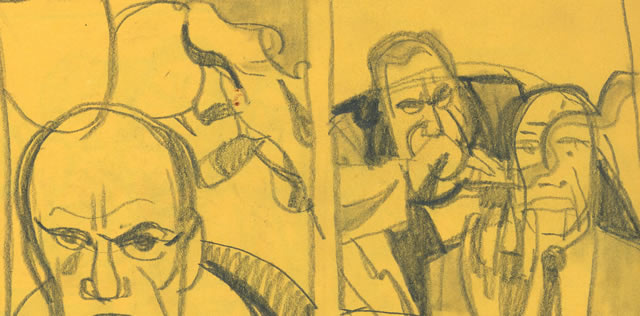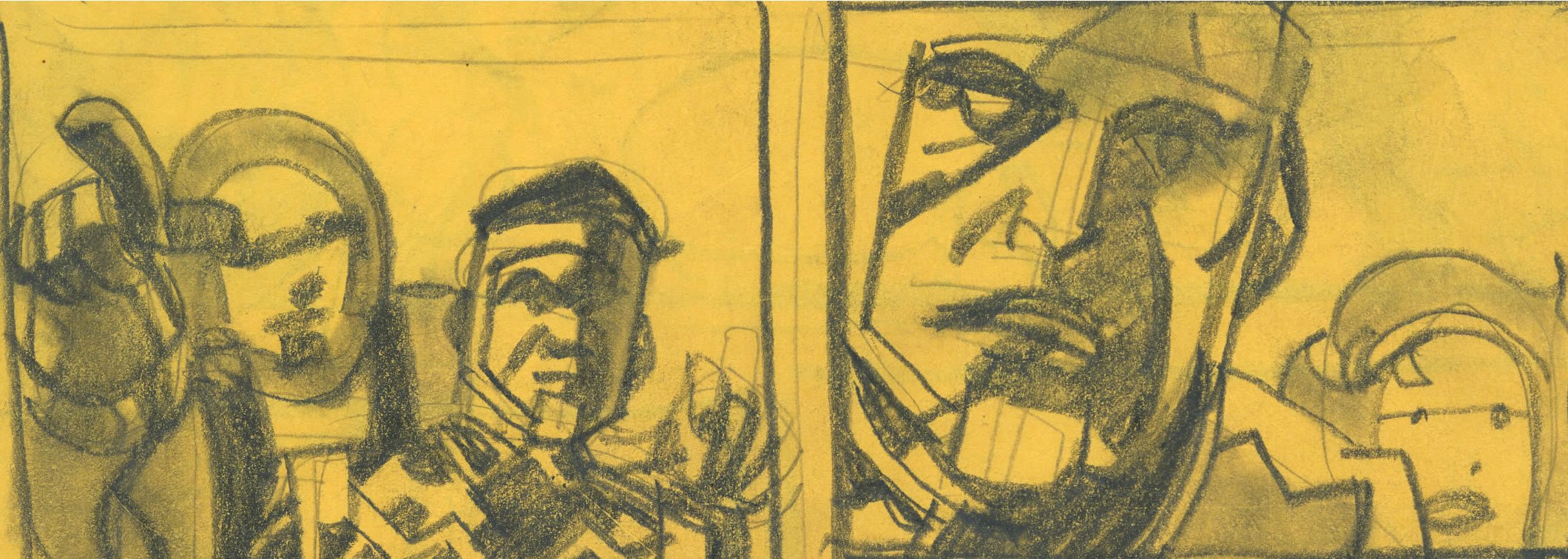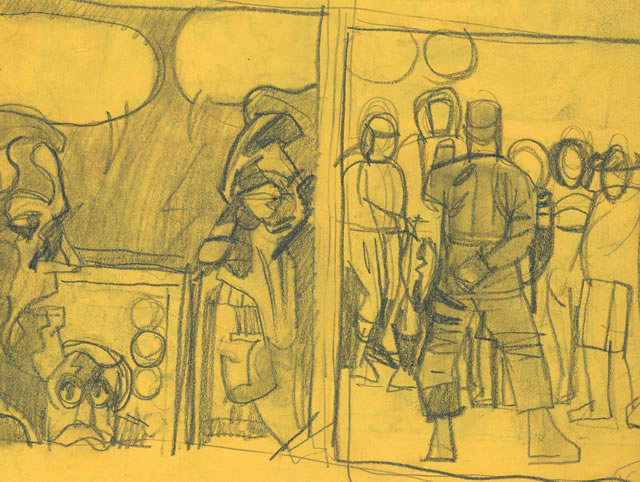Comics have characters, places and things, a plot with events no matter how surreal. From Batman to the latest hipster wildness, characters take action in a world. Comics telling those stories is the same practice that Homer engaged in around a fire, the creation of empathy, narrative suspense, and fascination. If you remove the characters, the empathy, the narrative drive traditionalists think there is nothing there. But it’s a rich nothing that has paper, ink, paint, a cartoonist, a reader, pages, things that make a book. Can that basic of a book exist outside of narrative traditions?
Alan Haverholm’s “When the Last Story is told”, is a 61 page graphic novel. It has no words, a six-panel grid and pages that look like late minimalism, others pages look like action painting, still more are paper and or photo collages.
You can’t consume this like a traditional comic, with no words you can’t even read it. As you you turn pages you have to ask yourself why? In a book, 61 collages become one object. As one object each panel now has a relationship with all the other panels. The first page with juicy thick white paint built over collaged paper declares itself as “Art” these days. A textural stamped black smudge runs out underneath panel 2 and leads the eye to turn the page.






